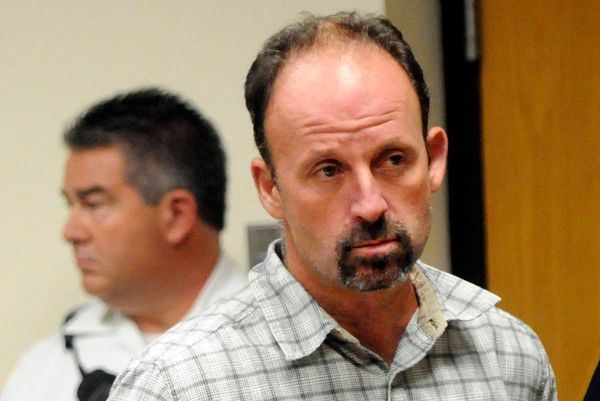
What Was the Wall Street Crash of 1929? Why Was It Important?
The worst stock market crash in American history took place over three days in October 1929. These days later became known as “Black Thursday,” “Black Monday,” and “Black Tuesday” and accounted for more than a 30% drop in the Dow Jones Industrial Average, worth $34 billion.
Share prices began to fall on Wednesday, October 23, jolting investors out of an eight-year bull market that had defined the Roaring 20s, and on Thursday, October 24th, the market continued to plummet. Unusually heavy trading volume accelerated the decline, causing stocks to lose $10 to $20 dollars of their value at a time. There seemed to be no buyers in this market, only sellers. The selling was so frantic, it overwhelmed the recording of market transactions on ticker tape, delaying reporting around the country and causing even more confusion and capitulation. The Dow ended the day with a staggering loss of 11%.
On Friday, October 25th, wealthy financiers like J.P. Morgan and Albert Wiggin attempted to restore confidence in Wall Street by “bailing out” the markets through large stock purchases at inflated prices. This strategy had worked during the Panic of 1907 but would prove fruitless this time around.
On Black Monday, October 28th, the Dow recorded its single worst decline in history, plummeting another 12.8%. Amidst the chaos, tens of thousands of people gathered outside the New York Stock Exchange to find out what was going on while grim newspaper headlines spread the news worldwide.
Panicked traders hoping for a rally would be thwarted; the sound of the opening bell on Black Tuesday was muffled by more calls to “Sell! Sell!” The Dow fell another 11%; another 16 million shares sold, worth another $14 billion. When the day ended, tens of thousands of investors had lost everything, and a wave of carnage was felt throughout the economy. Thousands of businesses, whose shares were now worthless, went bankrupt, and 90% of banks, which had invested heavily in the stock market, failed.
Tragically, at least two people lost their lives because of the stock market crash of 1929. Hulda Borowski, who had worked at a Wall Street brokerage for over 28 years, jumped from the 40th floor of the Equitable Building—exhaustion from the trading frenzy was cited as her motive, while George Cutler, a member of the New York Mercantile Exchange who saw his life’s savings wiped out, plunged from the 7th story window of his lawyer’s office, landing on a parked car.
What Caused the Stock Market Crash of 1929?
The stock market crash of 1929 would usher in the Great Depression, a decade-long crisis rife with hardship and suffering, and it wouldn’t be until the sweeping reforms of Roosevelt’s New Deal took effect and America entered World War II that it would finally end.
But what caused the crash in the first place?
During the 1920s, the stock market had seen incredible gains: Average share prices rose from $50 to more than $350. Families prospered, and businesses thrived. It was an age of industry, of railroads and skyscrapers. There were technological innovations, such as the automobile and the telephone. It was a time of exuberance and excess, driven largely by the Lost Generation, who, with scars still fresh from World War I, were used to testing limits.
Ordinary men and women who had never dreamed of stock ownership could now participate on Wall Street through the concept of margin, or buying shares with a small down payment—usually just 10%—using borrowed funds. Their goal was to ride the momentum as shares rose higher before selling for a profit before their remaining payment became due. This caused stock prices to soar, and speculation grew rampant: The greater the risks one took, they reasoned, the greater the rewards one could mint.
But that only worked when the trend was up.
By the end of the decade, an asset bubble had formed in the equities markets as well as in commodities like copper. The Federal Reserve decided to raise interest rates in an attempt to control it, but because the U.S. was still tied to the gold standard, its actions had the opposite effect, and a global chain reaction of recession resulted. Volatility grew in the markets from the beginning of 1929 through October 29th—and the rest, as they say, was history.
By the summer of 1932, the Dow would bottom out 89% from its peak, and it wouldn’t be until 1954 that it would regain its pre-crash heights.
Who Predicted the Stock Market Crash of 1929?
American economist Roger Babson seemed like the lone voice of reason in an age of excess. He was against speculation and did not believe in margin. On September 5th, 1929, he declared: “Sooner or later a crash is coming, and it may be terrific.” The market responded to his prediction by dropping 3% on the news; the decline was dubbed “The Babson Break.” Babson College was later named in his honor.
Could The Stock Market Crash of 1929 Have Been Prevented?
While scholars continue to debate whether the stock market crash of 1929 could have been avoided, at least the lessons Wall Street has learned from its past mistakes have helped steer it clear of other crises of similar magnitude:
- For example, trading stops have been implemented into electronic trading systems that halt trading if selling hits a predetermined level.
- In addition, the Fed injected much-needed liquidity into the markets through quantitative easing measures after the Financial Crisis of 2007–2008, and the markets recovered much faster than during the 1930s.
- Even a Former Fed Chairman, Ben Bernanke, apologized for the role the Fed played in prolonging the contraction which followed the stock market crash of 1929, stating that if the Fed had been quicker to institute reserve requirements for banks, known as federal funds, there would not have been as many banking panics, thus sparing Americans from losing all their savings in addition to their stocks.







